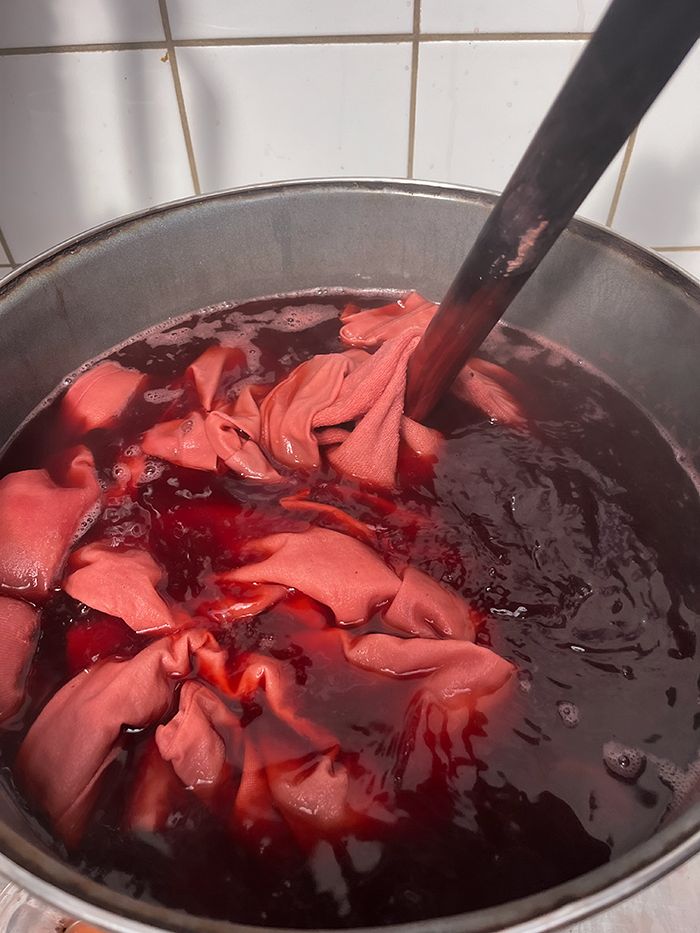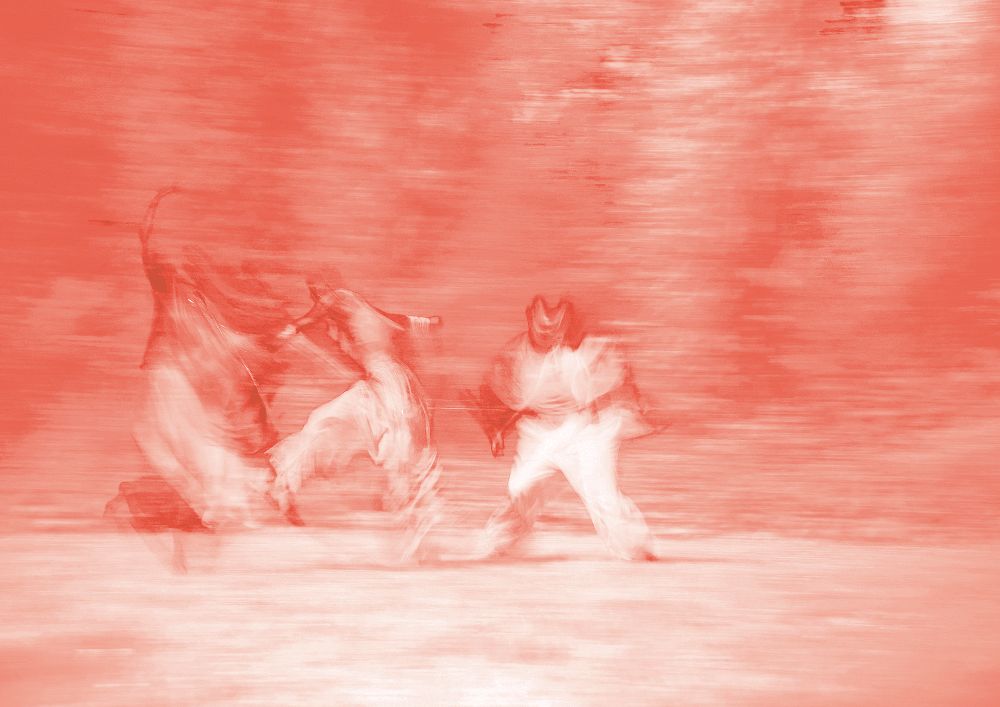
Pippa van Rijckevorsel
Keywords: Natural dye, Ritual, Communal knowledge
The Madderatorium
- guardians of the red pigment -

Growing up in the Netherlands, there was a lack of room for learning with my hands. I was taught that intellectual knowledge was superior, while ignoring the tingling in my hands.
The Madderatorium is an interactive installation composed of a structure, built from 99 pieces of sacrificed textile, each one dyed by visitors using Madder. Madder is a natural red pigment that was used to dye fabrics for centuries until 150 years ago, when the toxic yet much cheaper synthetical replacement was invented. The structure hosts a bath of Madder inside. Visitors can become a ‘guardian’ by undertaking a ritual promising to watch over Madder and to bring her back to Earth. They learn Madder’s history, use their hands to dye a piece of cloth in Madder’s red while revealing her story, and receive a Madder seed. After performing the ritual, the guardians of Madder will care for the plant while sharing their newfound knowledge.
My research started when I was called a ‘witch’ while I was stirring a large pot of red, bubbling substance alone in my room in The Hague. Curious about the connection between natural dyes and ‘witches', I delved into Dutch history in search of links. During this search, I learned hands-on from multiple people who generously shared their craft and plant knowledge with me.
I discovered that the Madder root was industrialised in the Netherlands, becoming a major export product in the sixteenth century – the same era as the infamous witchhunts across Europe took place. Reading Silvia Federici’s Caliban and the Witch helped me to realise that these events were both consequences of a rising capitalist society. Federici argues that the suppression of communal knowledge and practices was part of this transition, resulting in a society without room for a slow, communal way of living, for sharing plant knowledge, or for women scapegoated for such plant knowledge. Madder is a plant that takes years to grow and to dye with madder is a craft that requires time and care. So, with the arrival of the synthetic replacement, Madder and her knowledge soon disappeared. With this project, I aim to make room to share plant and craft knowledge related to the red-dyeing process.


Researching history, and through my studies at the Master of Industrial Design department, I learned how deeply our societal values and beliefs are shaped by historical narratives and events, such as oppressing plant knowledge and scapegoating women. The stories and ideas from centuries ago continue to influence our perspectives and actions today. I learned the importance of understanding where certain ideas and beliefs come from in order to retell a story,or even change it. In the future, I plan to continue to design rituals to bring people together while sharing knowledge of the hands.
